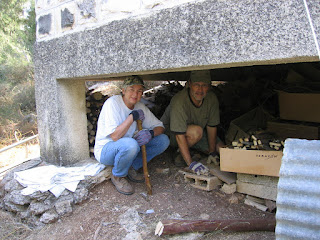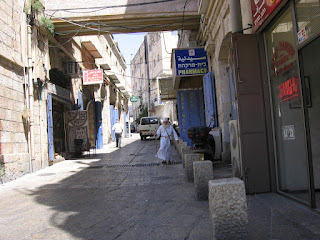
White Paper, generally defined as "the British Government White Paper of 1939 that severely limited Jewish immigration to Palestine, sealing the escape route of European Jews prior to World War II. Succumbing to pressure generated during the riots of 1936-1939 ("Arab Revolt") the British limited Jewish immigration to 15,000 per year for five years, after which there would be no more immigrants allowed at all. "
The Etzel, an armed Jewish underground organization in pre-State Israel (during the British Mandate period), bombed the building in protest.

Western Union, a way to transfer money abroad. Service inside the Post Office.

WIZO (in Hebrew it's pronounced vitso) is the Women's International Zionist Organization, a movement of Zionist women founded in England in 1920. WIZO volunteers do fine work to improve Israeli society.
I can show you where the ladies run a second-hand shop of housewares and clothes on Hillel Street. ;-)
 Watch out when walking in Warren's Shaft water system!
Watch out when walking in Warren's Shaft water system!
 Warren's Shaft in the City of David. It played an important part in bringing water to ancient Jerusalem. Watercourse? -- Some think that this system is the tsinor, translated variously as watercourse or pipe, mentioned in Samuel II 5:7-8, through which David conquered the city from the Jebusites.
Warren's Shaft in the City of David. It played an important part in bringing water to ancient Jerusalem. Watercourse? -- Some think that this system is the tsinor, translated variously as watercourse or pipe, mentioned in Samuel II 5:7-8, through which David conquered the city from the Jebusites.












































 Watering trough cut into a Crusader ashlar.
Watering trough cut into a Crusader ashlar.






